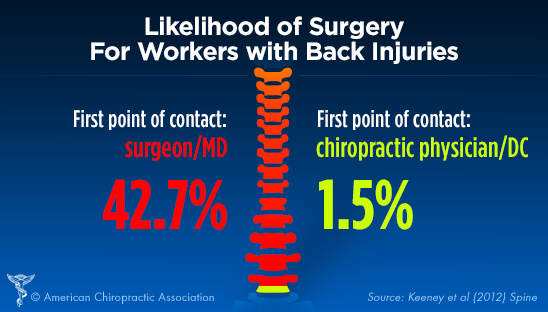Decoding Pain In The Back: What It Reveals About Your Health And Wellness And Typical Symptoms To Watch For
Decoding Pain In The Back: What It Reveals About Your Health And Wellness And Typical Symptoms To Watch For
Blog Article
Material Written By-Hamilton Knudsen
If you're experiencing back pain, your body might be attempting to tell you something more than simply pain. https://www.rheumatologyadvisor.com/home/topics/rheumatoid-arthritis/misdiagnosis-rheumatoid-arthritis-ra-infectious-disease-mimics/ feels can provide valuable ideas concerning your general wellness. Understanding the specific type of discomfort you're feeling and any accompanying signs is essential to unwinding the secret behind your pain. Let's explore the usual conditions and signs associated with different types of neck and back pain to shed light on what your body might be signaling.
Types of Neck And Back Pain
When it pertains to neck and back pain, there are numerous kinds that you may experience. One common kind is muscle mass pain, typically triggered by overuse, pressure, or injury to the muscle mass and tendons supporting the spinal column. This kind of pain can range from moderate discomfort to extreme and incapacitating discomfort.
One more kind is nerve pain, which can arise from conditions like herniated discs or sciatica. Nerve pain usually presents as a sharp, shooting feeling that radiates down the leg.
Joint pain in the back can originate from concerns like joint inflammation or sacroiliac joint dysfunction. https://chiropractornearmewithout95173.luwebs.com/31811856/keen-to-check-out-exactly-how-chiropractic-treatment-can-change-chronic-pain-alleviation-discover-its-impactful-role-in-all-natural-discomfort-management-strategies of pain is typically felt in the reduced back and can be aggravated by specific motions.
Additionally, pain in the back can be related to structural troubles such as back stenosis or vertebral fractures. Recognizing the type of pain in the back you're experiencing is vital in establishing the appropriate treatment and monitoring methods.
Common Symptoms to Watch For
Moving past the various types of pain in the back, it's important to acknowledge the usual signs and symptoms that can indicate underlying concerns.
Persistent pain in the back that aggravates with movement or in the evening can suggest a more significant issue. Tingling or prickling in the legs or feet, especially when accompanied by weakness, could indicate a nerve-related issue. If you experience abrupt fat burning along with back pain, maybe a sign of a much more systemic problem.
Take notice of any kind of adjustments in bladder or bowel function, as this could be connected to spine compression. High temperature, chills, or night sweats combined with neck and back pain may signal an infection. Keep an eye out for pain that emits down one or both legs, potentially indicative of sciatic nerve pain.
Health And Wellness Issues Linked to Back Pain
If you deal with pain in the back, it's crucial to recognize the potential wellness conditions linked to this discomfort. Neck and back pain can be a sign of numerous underlying problems, including muscle stress, herniated discs, osteo arthritis, back constriction, and also problems like kidney stones or infections.
Muscular tissue stress are common and often arise from raising hefty things or unexpected movements.
Herniated discs take place when the soft tissue in between vertebrae protrudes, triggering nerve irritation.
Osteoarthritis, a degenerative joint condition, can lead to back pain as cartilage material wears down.
Back constriction, the narrowing of the spine canal, can put pressure on nerves.
Kidney rocks may cause intense pain in the back if they move into the urinary tract.
Infections like spinal osteomyelitis can also manifest as neck and back pain. Understanding these potential health and wellness problems can help you seek suitable healthcare and monitoring for your pain in the back.
Conclusion
So, following time your back hurts, pay attention to the kind of discomfort and accompanying signs. Maybe a signal from your body regarding underlying health problems like muscular tissue pressure, nerve problems, joint issues, or even structural concerns. By identifying these indicators, you can take positive steps to address the root cause of your back pain and enhance your general health and wellness and health.
